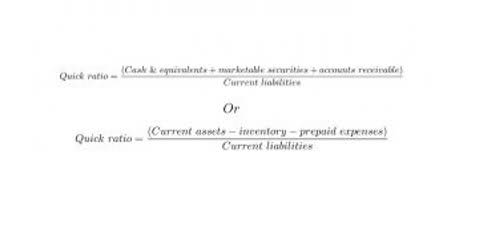
Your accounts in QuickBooks need to match the real-life bank and credit card accounts you’re tracking. When a new account is created, you pick a day to start tracking transactions. Then, you can enter a balance of your real-life bank account for whatever day you choose. QuickBooks Online uses double-entry accounting, so this initial capital is necessary for recording the Opening Balance of new accounts. Generally this only occurs when a new set of books is opened, as any accounts created thereafter can have both ends originate from within the business.
- Ideally, we would want to start a new QuickBooks company with a complete balance sheet or trial balance, showing all the account balances as of our QuickBooks start date.
- If it’s not, the accountant will usually look for errors or make adjustments to bring it to zero.
- You can use the Find a pro to help button on that page to sift through the database of QuickBooks-certified ProAdvisors that are at your disposal as well.
- If discrepancies exist between your recorded inventory assets and liabilities, QuickBooks adjusts OBE as a placeholder until you correctly allocate the amounts to their appropriate accounts.
- Equity accounts include common stock, representing the initial investment, and retained earnings, which reflect prior earnings.
Customer or vendor balances in Accounts Payable and Accounts Receivable
Remember, the Community is always available if you have questions about financial reporting or other bookkeeping tasks in QuickBooks Online. Your success with QBO is important to us, and we’re committed to providing opening balance equity the help you need to navigate the platform efficiently. Lastly, you can review your account register to view all transactions made through specific accounts within your business. To make the OBE balance positive and not negative, I suggest reviewing the outstanding checks and deposit transactions. It’s also important to verify if there are any pending transactions that could impact the balance.

Opening Balance Equity is Negative
He is currently the owner of Mad Hat Labs, a web design and media consultancy business. David has written hundreds of articles for newspapers, magazines and websites including American Express, Samsung, Re/Max and the New York Times’ About.com. Whether you’re looking for guidance from experts, want your books organized for tax time, or need a dedicated bookkeeper to do your books for you, Live experts are here to help. I can help you with downloading your transactions to QuickBooks Online (QBO). Allow me to chime in and share some details about your concern with your transactions in QuickBooks Online. If you want to correct the amount or date, and or delete an opening balance, just do so from the register.
Can I transfer the balance from the OBE account to another account?
When adding new accounts (e.g., a new bookkeeping asset or liability), QuickBooks may temporarily use the OBE account to balance transactions until allocations are completed. At the start of a new period, adjustments or accruals from the previous period may lead to an OBE balance. Allocate these funds appropriately based on their nature (e.g., revenues, expenses, or balance sheet accounts).

Enter opening balances for accounts in QuickBooks Desktop
- You would not debit opening balance equity when the original loan was recorded.
- The beginning balance amount should match what’s on your bank statement for the same start day.
- At the start of a new period, adjustments or accruals from the previous period may lead to an OBE balance.
- So he can process and submit your corporate taxes without a moment’s delay.
- Here you will get answers to all your questions related to opening balance equity.
Equity accounts are the financial representation of the ownership of a business. A negative balance is mostly seen in a checking account when a business has a negative balance. The negative balance occurs due to issuing checks for significant amounts of cash, that exceed the amount in the checking account. The amount of money whether positive or negative at the beginning of the accounting period refers to the opening balance of an account. While the amount left in an account at the end of an accounting period refers to the closing balance. If the company has outstanding vendor or customer balances, these should be entered as of the start date of the new company file.
By completing these steps, you’ll successfully clear the OBE account, ensuring accurate and clean financial records. Getting this right ensures your books are accurate from the get-go. If your records are off, it could cause significant problems down the line. You want your balance sheet to show what’s really going on with your finances. When you start managing your business with QuickBooks, you’ll encounter a term called Opening Balance Equity (OBE). If you’re new to accounting software or just launching your business, you might wonder what OBE is and why it’s important.
Step 2: Create a journal entry

In case the balances don’t match, it can lead to lingering balance, which can be cleaned up using software like Deskera. The opening balance account may not display on the balance sheet in case the balance is zero. Data entry errors can also cause issues with the opening balance equity account.
- The presence of Opening Balance Equity on the balance sheet is indicative of the need to allocate these initial values to the appropriate equity accounts.
- If you’ve had the account for a while, start your opening balance on the same day as the beginning of your next bank statement.
- You get these initial balances from various sources such as your previous accounting system, bank statements, financial statements, or other records.
- The process begins when you create a company file, configure your settings, and choose an accounting method.
- Getting this right ensures your books are accurate from the get-go.
- I just uncheck it to finalize the deposit, but is there a way to fix this?
Time Value of Money
Good account reconciliation can ensure the accuracy of Opening Balance Equity (OBE). You should reconcile your Bookkeeping for Veterinarians accounts regularly, at least once a month, to spot any mistakes or differences. Establish daily, weekly, or monthly reviews to verify transactions, reconcile accounts, identify and investigate discrepancies, and monitor resolutions. Regular reviews ensure that your financial records remain accurate and up to date. So, upon completing the setup, you might want to allocate this balance to the appropriate accounts, such as inventory assets or equity accounts. Debit the equity accounts you want to allocate the funds to, and credit the opening balance equity account for the same amount.
